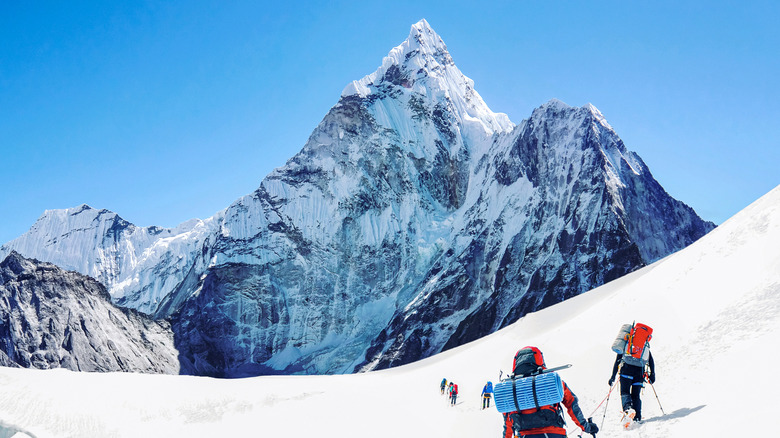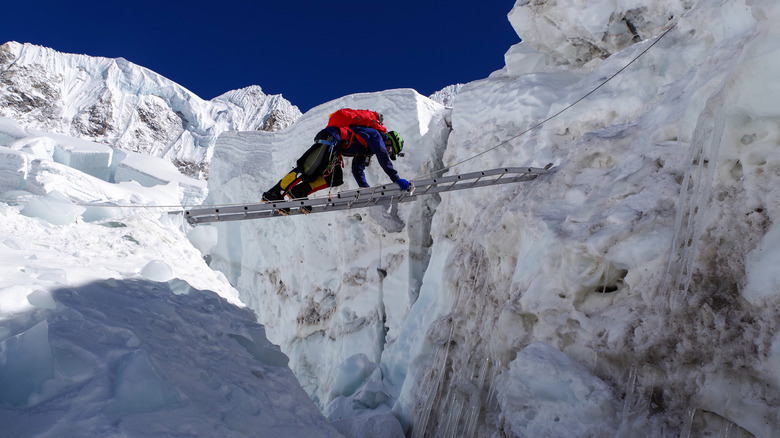How Dead Bodies Actually Help Hikers At Mount Everest
Mount Everest, the highest peak on Earth at 29,032 feet, is a popular expedition destination for plenty of climbers, both amateur and professional. Climbers train their bodies to prepare for the climb, but even then, a lot of people die on the mountain as the body is just not made for Everest's harsh conditions. The mountain even has a "death zone," the area with an altitude of 26,000 feet and above (via National Geographic.)
The death zone, as the name suggests, is where plenty of people have died trying to reach the peak. There, the body is extremely deprived of oxygen and as climber Dr. Jeremy Windsor stated, the oxygen levels of climbers there are like those "found in patients on the verge of death," as reported by Business Insider. Add to that the changing weather conditions and the possibility of an avalanche.
Almost 300 climbers have died on Mount Everest since the first attempt to reach the peak. Of those deaths, the majority of the bodies have not been recovered, as reported by The Guardian. There are many reasons behind leaving dead bodies, such as the cost (up to $80,000) and the dangers associated with recovery efforts.
Mount Everest's dead bodies serve as landmarks
Since most of the bodies remain on Mount Everest, some of them have been given nicknames and serve as markers for those attempting to reach the summit. One of the most popular is "Green Boots," named for the green climbing boots he wore. He was later identified as Tsewang Paljor (via BBC). His body sat for almost 20 years in a cave near the summit before it was recovered. One hiker said, "about 80% of people also take a rest at the shelter" where Green Boots died, and even after his body's recovery, the cave was named Green Boots' Cave.
Another body, that of female American climber Francys Distefano-Arsentiev, served as a landmark for climbers for nine years before it was retrieved. The climber was able to reach the summit of Mount Everest in 1998, but died of exhaustion on the way down, according to the BBC.
With plenty of climbers attempting to reach the summit of Mount Everest, the dead bodies serve as a reminder of what could happen. But most are driven to achieve their ultimate goal and have no choice but to step over those who have lost their lives in an attempt to reach theirs.

